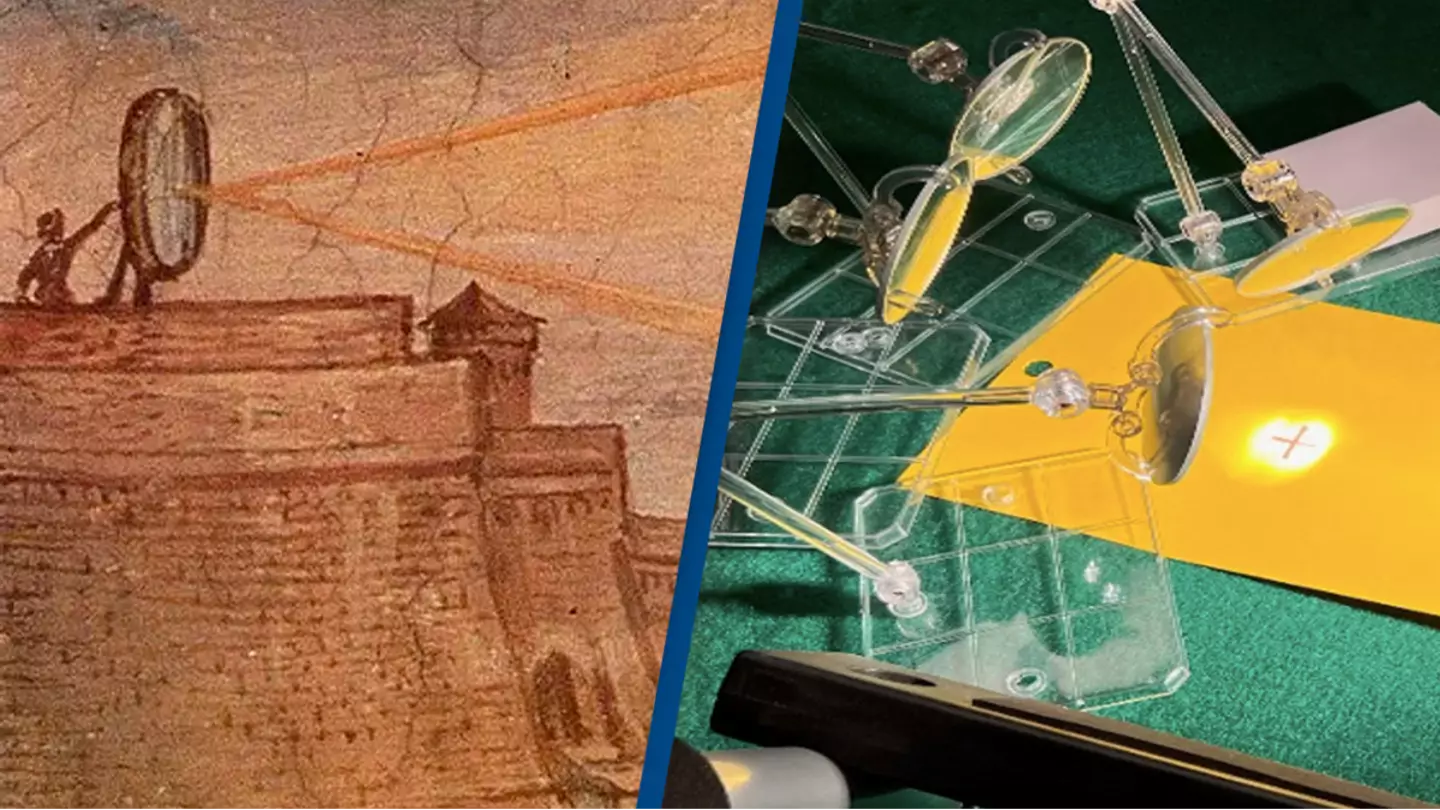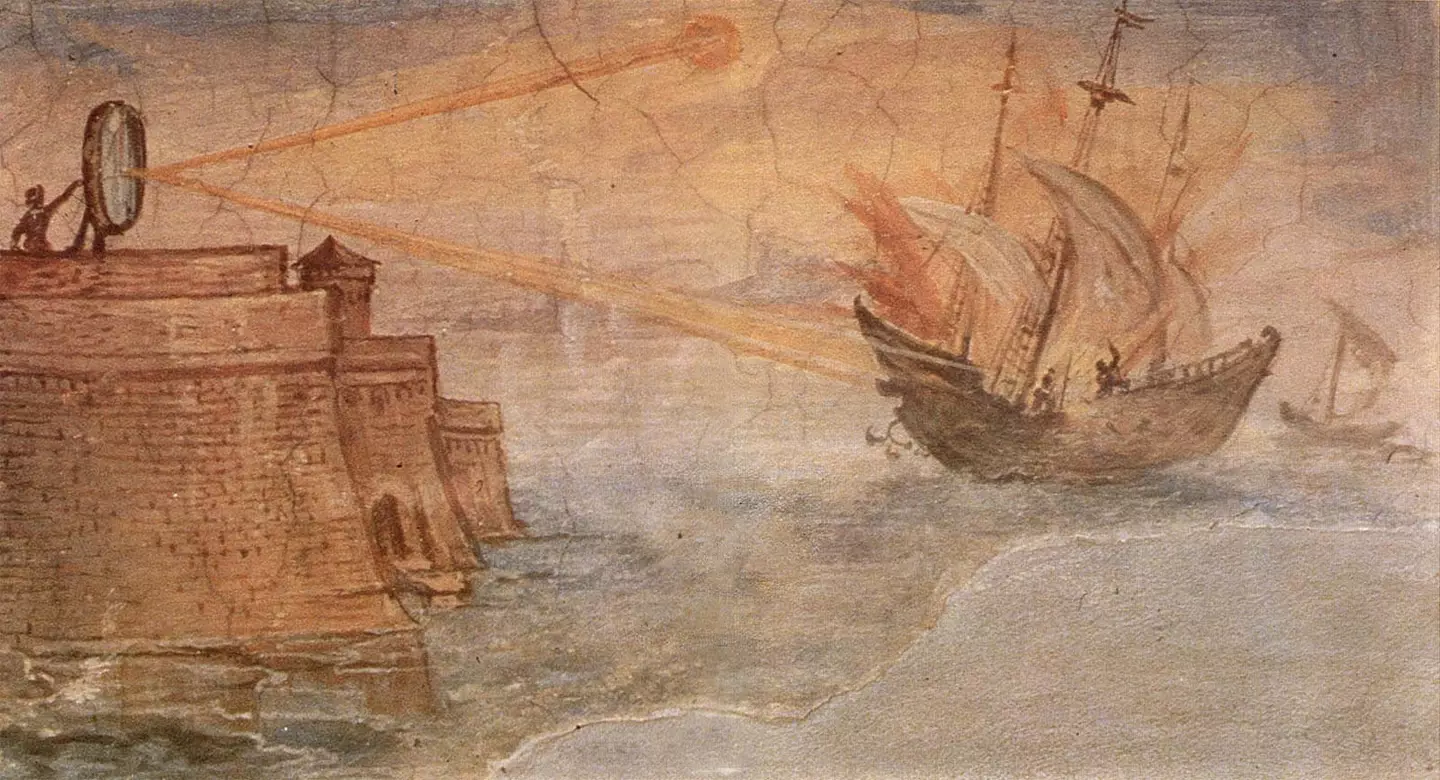
While some 12-year-olds are just graduating from middle school, others are stepping into the shoes of Ancient Greek inventors.
Born in 287 BC, Archimedes of Syracuse is considered to be one of the greatest mathematicians of all time.
If you’ve ever studied the area of a circle or used a compound pulley then hey - you have the Sicilian’s mind to thank.
As well as being a maths and physics genius, Archimedes is also the mastermind behind a so-called ‘heat ray’.
Advert
This weapon, also known as Archimedes’ death ray, supposedly worked by harnessing the sun’s rays and was used against Roman ships during the Siege of Syracuse.
After collecting sunlight, the weapon would focus the beams onto the Navy ships approaching the Hellenistic city, thus causing them to catch fire and sink.
While definitely an interesting contraption, researchers have yet to confirm whether the death ray ever really existed.
French philosopher René Descartes believes the invention was not used in the war between 213 and 212 BC.

However, a team from the Massachusetts Institute of Technology (MIT) found that the design could set a ship alight in just 11 minutes.
Advert
Amazingly though, it looks as if a 12-year-old boy has settled the debate by making a replica death ray himself.
With no Roman Republic boats to test the deadly weapon on, Brenden Sener created a scaled-down replica and used cardboard as his target.
He did so by using various concave mirrors and LED desk lamps with 50-watt bulbs.
According to IFL Science, the schoolboy positioned the reflectors to focus the lamp’s heat onto a piece of cardboard.
Advert
From there, he found that the temperature of a target could be raised by two degrees Celsius with each additional mirror.
He used three mirrors for his first experiment and then added a fourth to raise the temperature to a whopping eight degrees.

In a further experiment, Sener ramped up the wattage of the LED lamp to 100.
Advert
He found that there was a ‘change in temperature with each mirror’.
After the initial increase with three mirrors, he added a fourth reflector which allowed the beam to rise to an additional ten degrees.
Delivering his results, the kid said: “Based on my experimental findings, I agree with the MIT group and believe that with a strong enough heat source and larger, multiple mirrors all focused at a perfect angle, combustion could be possible.
“The historical descriptions of the use of the Death Ray in ancient Syracuse is plausible, however no archeological evidence of the Archimedes Death Ray has been found besides what is recorded in the books of Ancient Philosophers.”
Advert
For his hard work, Sener was apparently awarded various gold medals, including the Matthews Hall Annual Science Fair Gold Medal and the London Public Library Award for Inspiring Children’s Interests in Science and Technology.
Topics: Science, Technology, US News
